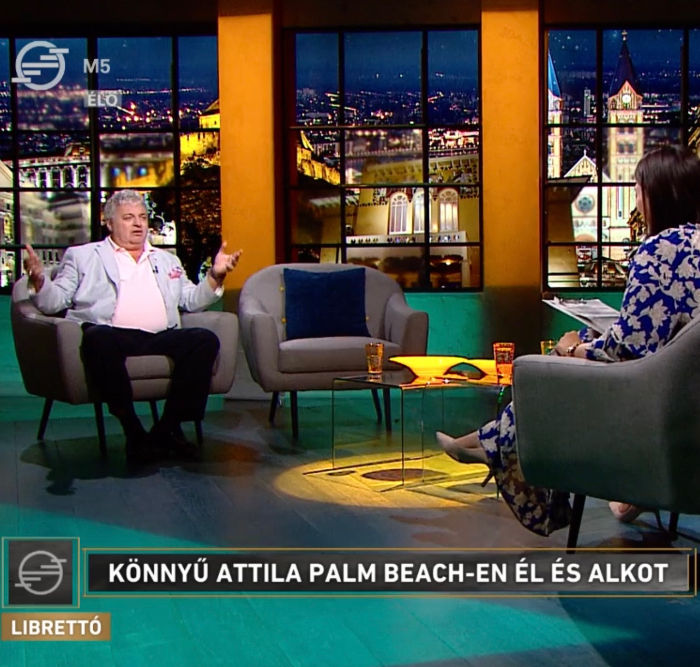Attila Konnyu International Company Limited – Hong Kong

Attila Konnyu: Not So Easy After All: Wabi-Sabi on Canvas
Exhibition in Szentendre, Hungary
Erdész Gallery in the Hungarian Art Center, Szentendre
May 2021
About the Event
Curatorial Essay
by Enikő Kisbán, MA
Art Historian, Museologist, Japanologist
In the paintings of Attila Konnyu, the influence of East Asian culture is not merely a visual reference. It permeates the very act of creation.
This is not the result of deliberate appropriation, nor of theoretical allegiance to Eastern thought. Rather, it is something more intuitive, more organic - an artistic orientation that feels lived, not learned.
Although I have encountered Konnyu’s work on many occasions, it was through our personal conversations that the deeper resonance with the Japanese concept of wabi-sabi (侘寂) became unmistakably clear.
Often mistaken for a purely aesthetic category, wabi-sabi is, in essence, a philosophical worldview - an elusive yet enduring Japanese notion rooted in Zen Buddhism. It champions the beauty found in imperfection, impermanence, and natural simplicity.
In recent years, it has been positioned in Western discourse as the "new hygge," a trend-laden label that risks reducing its depth to lifestyle décor. But wabi-sabi, like Konnyu’s work, resists such flattening. It is not a style. It is an experience.
The parallels between this philosophy and Konnyu’s artistic practice are compelling. Like wabi-sabi, his works reveal themselves in many forms: the textural surface of an oil painting, the raw wood of a timeworn table, the brushstroke suspended in stillness.
What unites these forms is their rejection of polished perfection in favor of emotional resonance and meditative stillness.
Each painting is an artifact of presence - both the artist’s and our own as viewers. This presence is informed not only by technique, but by a Taoist sensibility of restraint and receptivity.
Konnyu’s language of mark-making sits within the realm of gestural abstraction, but its aim is not to impress. It is to reveal.
As a multidisciplinary artist working across painting, performance, and digital media, Konnyu embodies a creative ethos aligned with Taoist art - intuitive, unforced, and rooted in lived experience.
His practice positions contemporary abstract painting as a space not for spectacle, but for spiritual attention.

About the Event
Situating Attila Konnyu within the Western canon - whether under the labels of Neo-Expressionism or Abstract Expressionism - feels reductive. These categories, while occasionally accurate, fail to capture the profound inwardness of his creative process.
For Konnyu, painting is less about executing an idea than engaging in an act of contemplative becoming. The result, like wabi-sabi itself, is not a fixed product, but a momentary expression, felt more than defined.
As Andrew Juniper, author of Wabi-Sabi: The Japanese Art of Impermanence, wrote: “If an object or expression can bring about within us a sense of serene melancholy and a spiritual longing, then we can say it is wabi-sabi.”
This quality saturates Konnyu’s canvases. There is harmony - not symmetrical or calculated, but intuitive and balanced, drawn from within. His works seem to breathe. Color and form do not resolve; they oscillate. The viewer is drawn into their energy, into a space where time loosens its grip and attention sharpens into perception.
Attila Konnyu’s abstraction is not static; it evolves. These paintings are never “complete” in the traditional sense. They continue to unfold through each act of viewing. As the philosophy of wabi-sabi teaches, nothing is permanent, and therein lies the true nature of beauty.
Gestural, emotionally charged, and intuitively formed, Konnyu’s painterly language aligns with the spontaneous ethos of gestural abstraction and contemporary abstract painting - traditions rooted in the subconscious, yet here filtered through an entirely different mode of presence.
His approach carries the lineage of Abstract Expressionism into something quieter and more contemplative. As a multidisciplinary artist grounded in Taoist principles of unforcing and attunement, his work does not seek to impose meaning. It offers space. Reflection, not proclamation. Stillness, not spectacle. These are not paintings to be decoded, but to be inhabited.
In the end, what unites wabi-sabi and Attila Konnyu’s work is the courage to embrace the unrepeatable. These are not works to be understood at a glance, but to be returned to - again and again - as they gently shift with the rhythm of one’s own awareness.
Exhibition organized by: Erdész Gallery, Szentendre
Curatorial contribution: Enikő Kisbán, MA

Critical Acclaim
“The artist creates under the influence of a force that overrides the self — a state of pure
presence in which ‘nothing else’ exists.”










